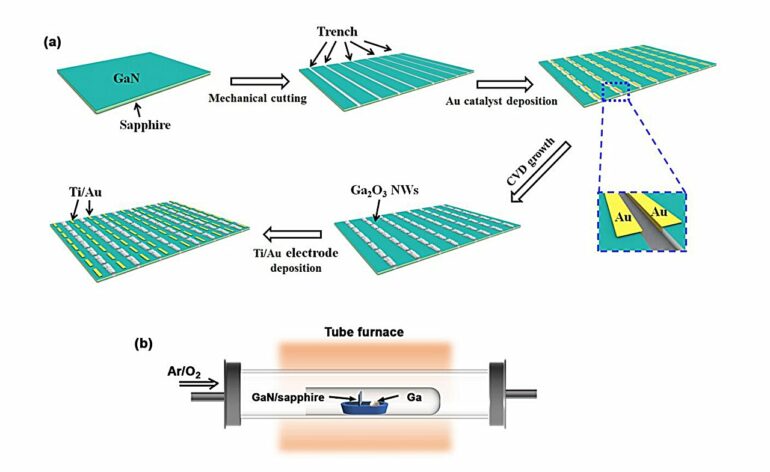Photodetectors and neuromorphic vision sensors are two typical optoelectronic devices that play important roles in sensing and processing optical information. Photodetectors have fast light response and high sensitivity, making them suitable for optical sensing, communication, and imaging systems. Neuromorphic vision sensors can perceive, store, and process light signals.
Integrating photodetectors and neuromorphic vision sensors into a single device that can be switched according to application scenarios would undoubtedly enhance the integration level and broaden the application domains of optoelectronic devices.
Recently, Assoc. Prof. Zhang Xinglai and Master student Feng Siyu from the Institute of Metal Research (IMR) of the Chinese Academy of Sciences and their colleagues have developed a trench-bridged GaN/Ga2O3/GaN heterojunction array device. By manipulating the ionization and de-ionization processes of oxygen vacancies in Ga2O3, the device exhibits volatile and non-volatile photocurrents at low and high voltages, respectively.
In other words, the roles of photodetector and neuromorphic vision sensor can be switched on a single device simply by adjusting the operating voltage.
The study was published in Advanced Materials on Oct. 9.
When operating as a photodetector at low voltage, the device demonstrates a fast photo-response speed and a high responsivity, enabling complex functionalities such as optically controlled logic circuits, photonic imaging, and optical communication.
As a neuromorphic vision sensor at high voltage, the device is able to simulate neuron/synaptic functions, including paired pulse facilitation, transition from short-term to long-term plasticity, learning-experience behavior, and image memory.
Furthermore, by using the device for image pre-processing, the recognition accuracy and efficiency of the images are improved.
This study provides a novel approach to achieve advanced functions for both photodetectors and neuromorphic vision sensors on a single device. It presents prospects for developing robot vision systems and neuromorphic computing.
More information:
Siyu Feng et al, Dual‐Mode Conversion of Photodetector and Neuromorphic Vision Sensor via Bias Voltage Regulation on a Single Device, Advanced Materials (2023). DOI: 10.1002/adma.202308090
Provided by
Chinese Academy of Sciences
Citation:
Researchers develop device that can switch between photodetector and neuromorphic vision sensor (2023, November 16)



